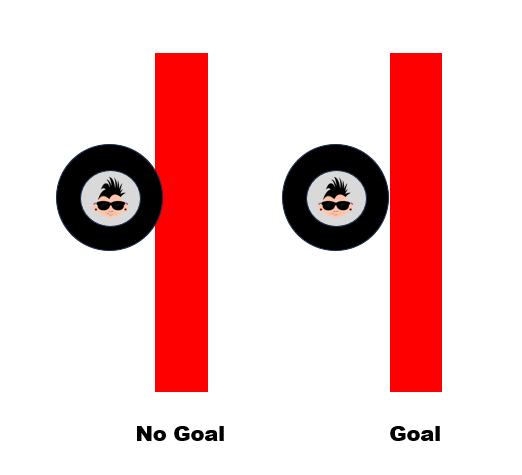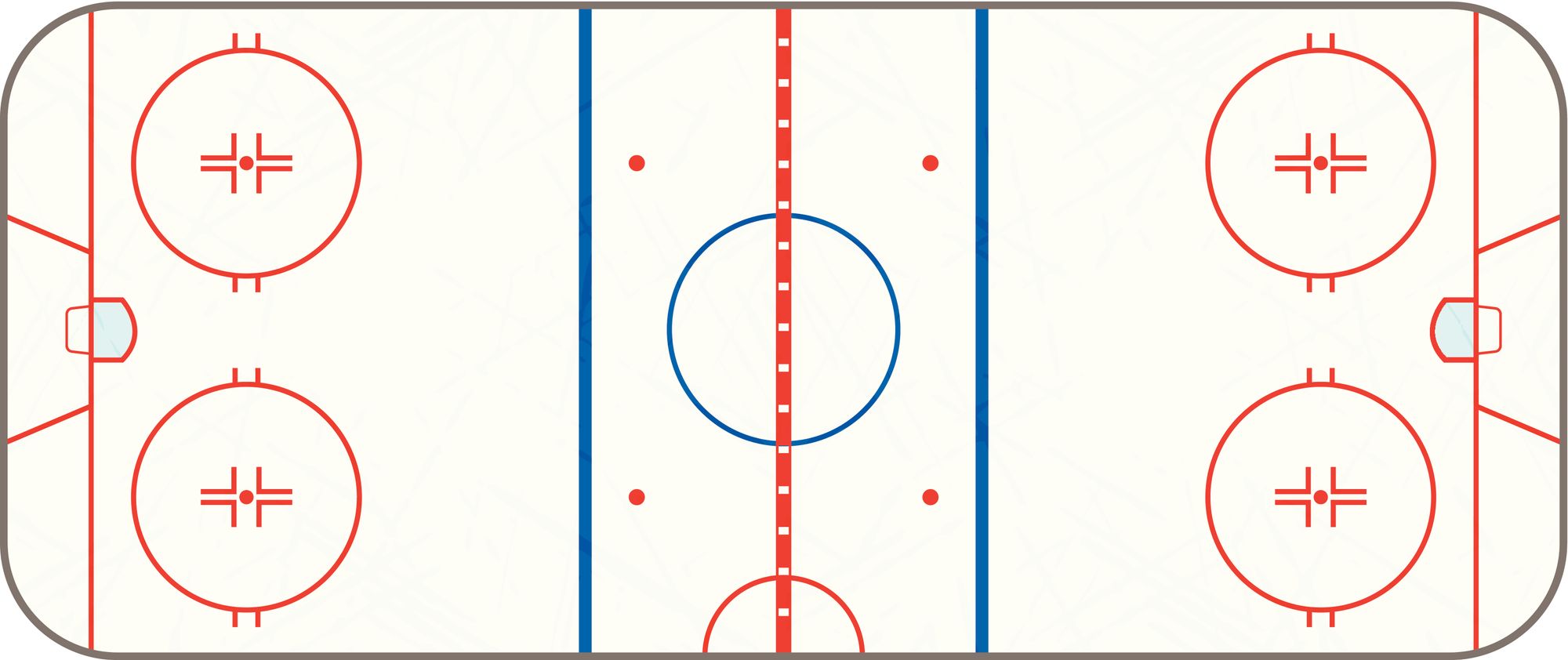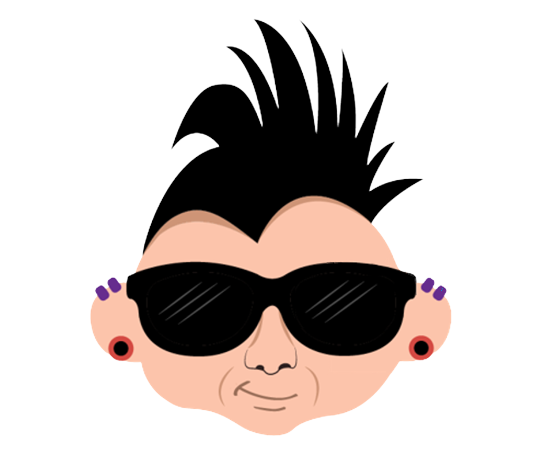Hockey's Awesome...but What Exactly are the Rules?

In this Edition
- What is the Objective of the Game?
- Where is Hockey Played?
- What are the Basic Rules of Play?
- What is the Game Structure?
What is the Objective of the Game?
The primary objective in hockey is simple: outscore the opposing team by shooting the puck into their net. A team scores a goal when the puck completely crosses the goal line and enters the net. The below (puck proximity to goal line) illustrates how close you can come to not scoring a goal – it can be a case of millimeters.

The team with the most goals at the end of the game emerges victorious. The winning team receives two points, and the losing team receives no points. Things work a bit differently if there's a tie.
If there's a tie at the end of the sixty-minute regulation time, then the game goes into overtime. In the regular season, this is a 5 minute overtime period as a three-on-three (three skaters on either side) and the first team to score a goal will win. If no team wins, then the game goes into a shootout. The losing team in a shootout will receive one point (called an overtime loss or OTL) and the winning team will receive two points (called an overtime win or OTW). In the playoffs, it works differently. The teams keep playing full overtime periods (i.e., twenty minutes) until a team scores.
Where is Hockey Played?
Hockey is played in an arena (also called an ice hockey rink or just rink). The rink is a rectangular playing surface with specific dimensions. The NHL standard rink is approximately 200 feet long and 85 feet wide. The rink is surrounded by boards and glass, creating boundaries for the game.
In the picture below, you can see how the rink is split into three zones: the offensive zone at one end, defensive zone at the other end, and neutral zone in the middle, each serving different purposes during gameplay. The line at the end of each zone is called the goal line, the lines at the edges of the neutral zone are called the blue lines, and the red line in the middle is called the center line (sometimes called the red line).
In each of the zones, you also see face-off dots and circles. Face-offs allow the officials to drop the puck which starts a play. There are many reasons why the play might stop (e.g., a penalty is called, the puck goes out of play, a player is offside, etc.), and depending on what happened and where it happened, the rules dictate where the official drops the puck to start the next play. When the puck is dropped, the clock starts, and when the play stops the clock stops.

There are three periods in a hockey game, each twenty minutes long. The teams will change sides each period, so their defensive zone is where their goalie is located and their offensive zone is where the opposing goalie is located. There is no shift in the neutral zone, hence why it's called the neutral zone. The lines across the zones are important; they play a part in the implementation of the rules. For example, the blue lines mark the entry into the opposing team's offensive zone, and if one of your own players cross the blue line before the puck, this is known as offside. The puck must always cross the blue line first.
What are the Basic Rules of Play?
To ensure fair play and maintain the integrity of the game, several rules govern ice hockey. Let's explore some fundamental (and more common) rules.
- Icing: Icing occurs when a player shoots the puck from behind the center red line and it crosses the opponent's goal line untouched. This results in a faceoff in the offending team's defensive zone. However, icing is waived if the opposing team's player could have played the puck but chose not to. What's interesting (and punitive) in the NHL is if a team ices the puck, and the officials call it, the team who iced the puck cannot change their line until the next whistle.
- Offside: Offside is called when an attacking player crosses the blue line (or enters the offensive zone) before the puck does. To be onside, a player must enter the zone with the puck as opposed to skating across the line with the puck following. Offsides are a good rule in that they keep the game play tighter and more interesting (players can't dangle too far down the ice just waiting for flip passes).
- Penalties: Penalties are enforced to discourage rule violations. Players who commit penalties must serve time in the penalty box, leaving their team short-handed. Common penalties include tripping, hooking, high-sticking, and slashing. Penalties can result in power plays or penalty kills, where teams have a numerical advantage or disadvantage, respectively.
If you're new to hockey, then you may be confused by the various calls made by the referee (aka the "ref"). That is, there are many different types of penalties (e.g., minor penalties, major penalties and match penalties), and each of these creates an advantage for your opponent. Effective teams can excel on the power play so in general you want to avoid penalties.
Note that different penalties come with varying penalty times – e.g., a minor penalty is 2 minutes, a major penalty is 5 minutes, etc., so being shorthanded can be very costly.
Whenever a play is called in hockey, the official will use their arms to indicate the infraction when they call the play or penalty. For example, a ref will put one hand up straight on an icing call, or tap their elbow for an elbowing penalty. See the image below for more ref signals and the call to which they correspond.

A game can be won and lost on small mistakes or simple plays. For example, icing in a tight game in the third period puts one team at a disadvantage--they may be tired and the face-off returns to their end of the ice. Another example are penalties that serve no purpose (the coach calls these stupid penalties), which at best put a team in a shorthanded situation for two minutes--maybe more. All of these rules and the way the game flows around them make hockey an incredibly exciting game--one where small mistakes can cost you a game.
What is the Game Structure?
NHL hockey games are divided into three periods, each lasting twenty minutes. The teams switch ends after the first and second periods. During intermissions, players rest, and the ice is resurfaced to maintain optimal playing conditions. The intermission in the NHL lasts about fifteen minutes.
Overtime and Shootouts: In regular-season NHL games, if the score is tied at the end of regulation time, a sudden-death overtime period is played. If no goals are scored in overtime, a shootout determines the winner.
Playoffs: In the NHL playoffs, if a game remains tied after regulation, additional full twenty-minute periods are played until a goal is scored (often referred to as "sudden-death overtime"). This continues until one team emerges as the winner. There have been a few famously long games, a more recent one in 2020 (Columbus Blue Jackets vs Tampa Bay Lightening) went five overtime periods!
In the regular season, teams play 82 games – a long and tough season. Each team plays 26 divisional games, 24 intra-conference games and 32 inter-conference games. This results in at each team playing every other team at least twice. In the playoffs, the top 16 teams get through, 4 from each division, and they play a best-of-seven series until there is a single winner for the Stanley Cup.
Now that you have a good grasp of some of the fundamental rules and gameplay, you're ready to immerse yourself fully in the excitement of ice hockey. Check out our other posts in the Puck 101 series, where we explore all things hockey!
Subscribe to our newsletter to get the latest and greatest content on all things hockey analytics!

Member discussion